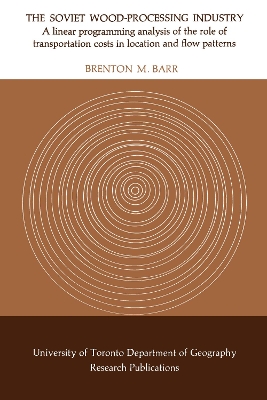Heritage
1 total work
Systematic study of the geography distribution of the wood-processing industry has received recent Soviet attention, yet the results have been disappointing. Soviet work has been descriptive and lacking in critical analysis of the location problem. In particular, there has been little, if any, attempt to assess the geographic distribution of the industry within the general context of location theory and to evaluate the role played by individual location factors. This monograph is a case study in the application of linear programming techniques to the analysis of transportation patterns within the wood-processing industry. It will add to North American studies not only a knowledge of the location of wood-processing industries but also a better understanding of the factors which have influenced the location of wood-processing in the Soviet Union.
(University of Toronto Department of Geography Research Publications No. 4).
